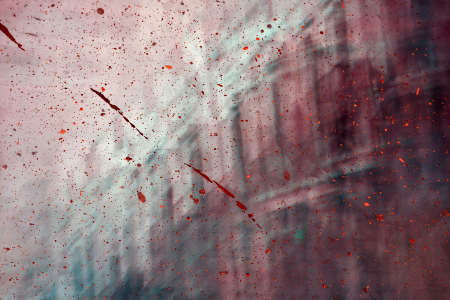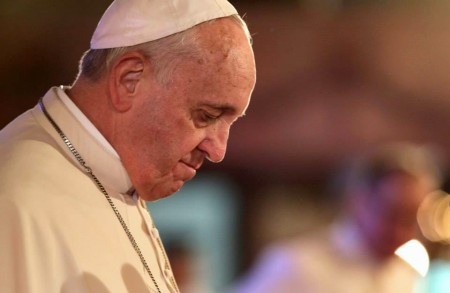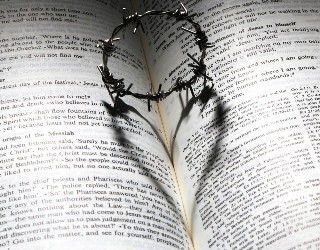We ask you, humbly: don't scroll away.
Hi readers, it seems you use Catholic Online a lot; that's great! It's a little awkward to ask, but we need your help. If you have already donated, we sincerely thank you. We're not salespeople, but we depend on donations averaging $14.76 and fewer than 1% of readers give. If you donate just $5.00, the price of your coffee, Catholic Online School could keep thriving. Thank you.Help Now >
Bartolomeo Montagna
FREE Catholic Classes
Italian painter, chief representative of the Vicenza School, b. at Orzinuovi about 1450; d. at Vicenza, 11 October, 1523.
Very little is known concerning his life. His work presents not a very original, but happy combination of the dual influence of Padua and Venice. The forms, draperies, grandeur, and often the energy of expression betray the action of Montagna, but the order of his altar-pieces, their harmonious symmetry, and the beauty of their colouring recall Giovanni Bellini or Carpaccio. Perhaps, he even surpassed these two masters as regards power of tone, and resembles Crivelli more closely. Two Madonnas in the gallery of Vicenza and a smaller one in the Lochis Gallery at Bergamo (1487) are characteristic of his early manner, which is not free from stiffness and a certain dryness. Here the artist still retains the old process of distemper. His best period was from 1490 to 1505, his years of work and travel, during which he was busily occupied throughout all the district. At Verona he painted house façades in fresco, and executed the graceful paintings, unhappily much damaged, of the Chapel of St. Blaise in the Church of Sts. Nazzaro and Celso (1493), of which Salconetto was the architect. There is little logic in the construction, but the details, despite the dilapidation of the whole, still present a charming effect. In the cupola there are two circles of panels with figures of angels under figures of saints between pilasters, and a frieze with a procession of Nereids. The whole, supported by the Evangelists painted on pendentives, is a brilliant example of the delightful inconsistency of the Renaissance. There are frescoes by Montagna in the Scuola del Santo at Padua. His best-known works are his altar-pieces, painted in oil in the manner of Bellini.
 Hi readers, it seems you use Catholic Online a lot; that's great! It's a little awkward to ask, but we need your help. If you have already donated, we sincerely thank you. We're not salespeople, but we depend on donations averaging $14.76 and fewer than 1% of readers give. If you donate just $5.00, the price of your coffee, Catholic Online School could keep thriving. Thank you. Help Now >
Hi readers, it seems you use Catholic Online a lot; that's great! It's a little awkward to ask, but we need your help. If you have already donated, we sincerely thank you. We're not salespeople, but we depend on donations averaging $14.76 and fewer than 1% of readers give. If you donate just $5.00, the price of your coffee, Catholic Online School could keep thriving. Thank you. Help Now >
The large retable of the Brera (1499), the Madonna enthroned in a magnificent chapel with two saints on each side and three angels playing on the steps of the throne, is perhaps his masterpiece. Whether for its architecture, its dignity, the sweetness of its figures, or for the depth and power of its colouring, it is in all respects one of the most beautiful canvases produced at that period in Upper Italy. The "Pietà" of Monte Berico (1500) is of a quite different character : it is a startling picture of grief, the figures being of a violent, almost brutal naturalness. The Academy of Venice possesses some works in his later manner; the tone grows subdued, becoming brown and slightly hard and dull. Such is the "Madonna enthroned between St. Roch and St. Jerome ". But there is still a deep sentiment of mystical adoration in the "Christ between St. Roch and St. Sebastian ". Vicenza is especially rich in Montagna's works, no less than ten being found at the Academy, not to mention the frescoes of the Duomo of S. Lorenzo and some altar-pieces, such as that of Santa Corona. Nearly all are late works. Outside of Italy may be mentioned the "Ecce Homo" of the Louvre and especially the charming piece, as tender and delicate as a Carpaccio, the "Three Angelic Musicians"; a large and magnificent retable of 1500 at the Museum of Berlin ; a beautiful bust of the Madonna at Bremen ; a "Holy Family" at Strasburg and some other less important works in England (Butler, Farrer, and Samuelson collections, and at the home of Lord Cowper at Panshanger).
Bartolomeo had a son, Benedetto, who was chiefly notable as an engraver. As a painter he is little more than a feeble imitator of his father, as is proved by a Madonna at Milan and a "Trinity" in the Cathedral of Vicenza. He flourished from 1490 to 1541.
We ask you, humbly: don't scroll away.
Hi readers, it seems you use Catholic Online a lot; that's great! It's a little awkward to ask, but we need your help. If you have already donated, we sincerely thank you. We're not salespeople, but we depend on donations averaging $14.76 and fewer than 1% of readers give. If you donate just $5.00, the price of your coffee, Catholic Online School could keep thriving. Thank you.Help Now >







 Daily Readings for Friday, April 19, 2024
Daily Readings for Friday, April 19, 2024 St. Alphege: Saint of the Day for Friday, April 19, 2024
St. Alphege: Saint of the Day for Friday, April 19, 2024 Stewardship Prayer: Prayer of the Day for Friday, April 19, 2024
Stewardship Prayer: Prayer of the Day for Friday, April 19, 2024

